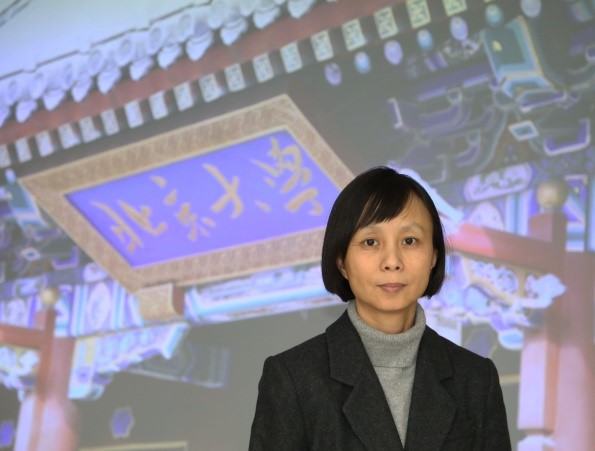【百家大講堂】第299期:有機光電材料設(shè)計中的超分子結(jié)構(gòu)調(diào)控
講座題目:有機光電材料設(shè)計中的超分子結(jié)構(gòu)調(diào)控
報 告 人:趙達慧
時 間:2019年12月23日(周一)9:00-11:00
地 點:中關(guān)村校區(qū)求是樓426
主辦單位:研究生院、材料學(xué)院
報名方式:登錄北京理工大學(xué)微信企業(yè)號---第二課堂---課程報名中選擇“【百家大講堂】第299期:有機光電材料設(shè)計中的超分子結(jié)構(gòu)調(diào)控”
【主講人簡介】

趙達慧 博士 教授 1997年畢業(yè)于北京大學(xué)化學(xué)學(xué)院,獲得學(xué)士學(xué)位。2003年獲得美國依利諾伊大學(xué)化學(xué)系博士學(xué)位,之后于美國麻省理工學(xué)院進行博士后研究。2006年起受聘于北京大學(xué)化學(xué)學(xué)院,任副教授,學(xué)術(shù)組長,博士生導(dǎo)師,2014年晉升為教授。主要研究方向為新型有機聚合物光電功能材料的設(shè)計合成與性質(zhì)研究,以及有機共軛體系超分子結(jié)構(gòu)的可控構(gòu)筑及其對光電性質(zhì)的調(diào)控作用。主持國家級科研項目10余項。在國際學(xué)術(shù)期刊發(fā)表通訊作者和第一作者論文80余篇。獲得國家自然科學(xué)基金委杰出青年基金、教育部新世紀優(yōu)秀人才、優(yōu)秀青年科學(xué)基金、霍英東基金會青年教師基金優(yōu)選資助課題、日本化學(xué)會Distinguished Lectureship Award、北京市科技新星計劃等。還曾獲北京大學(xué)教學(xué)卓越獎。受邀在國際及全國性學(xué)術(shù)會議報告70余次。目前擔(dān)任Chemistry of Materials(美國化學(xué)會)副主編。
【講座信息】
The supramolecular structures of organic π-conjugated molecules are of great importance to organic electronics and other related fields, since the functional materials' properties are sensitively influenced by the intermolecular interactions in both crystalline and amorphous states. Therefore, the ability to control and fine tune the supramolecular structures of conjugated molecules is highly desirable in designing organic functional materials. Nonetheless, it is still a great challenge to precisely predict and construct with control the supramolecular structures of organic molecules, because they are governed by a range of weak yet collectively influential noncovalent interactions. Thus, supramolecular systems showing competing assembling paths provide valuable platforms to learn to maneuver the supramolecular architectures.
The presentation focuses on the self-aggregation behaviors of a series of pi-conjugated molecules showing competing assembly paths leading to different aggregate structures, which can be conveniently differentiated with electronic spectroscopy. Interestingly, by virtue of the energetic disparity among different paths, different aggregate products are manifested sequentially and selectively under by varied conditions (e.g., solvent polarity, temperature, concentration changes, etc.). After carefully examining the correlation between the molecular structure and corresponding supramolecular architectures, we were able to unravel the underlying structural basis that determine the assembly energetics. The results suggest that both the electronic features and the steric geometry of the molecules are important factors governing the supramolecular architectures and the energetics thereof. With such information, we are able to alter the assembly path and control the aggregate structure, by subtly modifying the molecular structures. These supramolecular chemistry studies have helped us better understanding the general behaviors of pertinent functional molecules and designing new materials more rationally.
